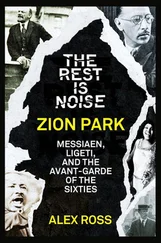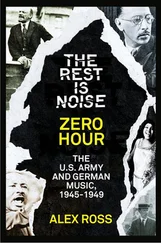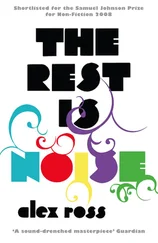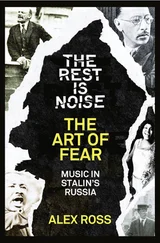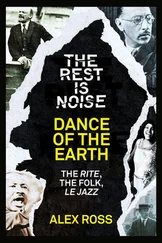In the spring of 1945, French radio organized a seven-concert survey of Stravinsky’s works at the Théâtre des Champs-Élysées, where the fabled premiere of The Rite of Spring had taken place more than thirty years before. On March 15 a group of young composers, all of them students from the conservatory, disrupted a performance of Stravinsky’s Four Norwegian Moods by booing, shouting, whistling, and, according to one report, banging with a hammer. A second demonstration followed, with Boulez among the participants.
Afterward, the French musical world struggled to make sense of the episode. Francis Poulenc, a longtime Stravinskyite, wrote an article for Le Figaro titled “Vive Strawinsky,” in which he lashed out against the “imitation Left” of “youths” and “pseudo-youths” who had insulted his hero. In a letter to Darius Milhaud, Poulenc described the troublemakers as a “fanatic sect” of “Messiaenistes.”
By this time Boulez was a Messiaeniste no longer. Messiaen had proved insufficiently ruthless in his methods, his sentimentality embarrassingly on display when, in a response to the Stravinsky booing affair, he decried “dry and inhuman” tendencies in contemporary music and called for “a little celestial tenderness.” Instead, Boulez sought out lessons from René Leibowitz, who drilled him in twelve-tone procedures. After a year, Leibowitz, too, was found wanting. One day in 1946, Peyser tells us, Boulez brought in the manuscript of his First Piano Sonata, which he wished to dedicate to his teacher. When Leibowitz set about noting various procedural errors, Boulez threw a tantrum, shouted “ Vous êtes merde! ” and ran from the room. Later, while preparing the sonata for publication, Boulez saw Leibowitz’s name at the top of the first page and stabbed it repeatedly with a letter opener. Boulez also showed animosity toward fellow composers who neglected to follow him on the high modern road. When, in 1951, Henri Dutilleux presented his vibrantly diatonic First Symphony, Boulez greeted him by turning his back.
In the First Sonata, Boulez’s rage exploded into sound. Gone was the French taste for crisp construction. Gone too was Schoenberg’s habit of couching his twelve-tone material in Classical forms and Romantic phrases. Webern was the chief model, although Webern’s lyricism was minimized. Smatterings of pointillistic detail gave way to jabbing, crashing, keyboard-spanning gestures. Aided by Messiaen’s researches, Boulez maximized rhythmic contrast, creating an asymmetry of pulse to match atonality in harmony. The first movement climaxes with an arpeggiated chord marked “violent and rapid,” the second with a chord marked “very brutal and very dry.”
Violence is the leitmotif of other Boulez works of this period: Le Visage nuptial for voice and orchestra, a setting of poems by René Char (“Take leave, my allies, my violent ones”); and Le Soleil des eaux , also based on poems by Char (“River with an indestructible heart in this mad prison-world, keep us violent”). Boulez wrote in 1948, “I believe that music should be collective hysteria and spells, violently of the present time.” In the same year he finished his Second Piano Sonata, whose final movement builds through stepwise intensifications of expression—“more and more staccato and brutal,” “still more violent”—to a passage in which the pianist is asked to “pulverize the sound; quick, dry attack, as if from bottom to top; stay without nuances at very high volume.”
“Without nuances” is an apt phrase for a spate of polemical articles that Boulez began issuing in 1948. The essay “Trajectories: Ravel, Stravinsky, Schoenberg” cleared away extant compositional styles in an ticipation of the next wave. Ravel was a gold mine of sounds, but cir cumscribed by “false discoveries,” “impotence.” The critique of Stravinsky resembled Adorno’s in Philosophy of New Music ; neoclassicism was “schematic, arbitrary, stereo typed.” The attack on twelve-tone writing also echoed Adorno’s sociological cant; Schoenberg used his technique “to enclose classic and preclassic forms in the elaboration of a world ruled by functions antagonistic to those very forms.” The one bright light was Webern, whose orientation was “more virulent than that of his master’s works of the same era, a position that in a sense would lead to their annihilation.”
When Schoenberg died in the summer of 1951, Boulez penned a breathtakingly pitiless obituary. “The Schoenberg ‘case’ is irritating,” he wrote. The old man had revolutionized the art of harmony while leaving rhythm, structure, and form untouched. He had displayed “the most ostentatious and obsolete romanticism.” It was time to “neutralize the setback,” to rectify the situation. “Therefore,” Boulez concluded, “I do not hesitate to write, not out of any desire to provoke a stupid scandal, but equally without bashful hypocrisy and pointless melancholy: SCHOENBERG IS DEAD.”
What could replace Schoenberg’s antiquated paradigm? Messiaen supplied the beginning of an answer. Back in 1946 he had planned a “ballet on Time”—a piece in which he would “develop timbres, durations, and nuances according to the principles of serialism.” In the summer of 1949, he set to work on a piano piece called Mode de valeurs et d’intensités , or Scale of Durations and Dynamics , which became the springboard for a new compositional technique known as “total serialism.”
In the interest of cultivating rhythmic variety, Messiaen decided that the lengths of notes—sixteenth, eighth, quarter, and so forth—should be arranged in a scale parallel to the scale of pitches. He also made rows of dynamic levels ( ppp , fff , pp , ff , and so on) and of attacks (accented, staccato, legato, and so on). A particular note is always assigned the same values. Thus, the high E-flat is always a thirty-second note, is always played ppp , and is (almost) always slurred. The idea of “scales of rhythm” was not new, having already been theorized by two American experimenters, Charles Seeger and Henry Cowell. Messiaen was, however, the first to coordinate all the variables in one system.
Scale of Durations and Dynamics , which appeared in the collection Four Rhythm Études , was the work that really electrified Messiaen’s current and former students, among them Boulez, Jean Barraqué, and Karel Goeyvaerts. Here was the maximally differentiated music that they had been seeking. Barraqué, in fact, had already begun serializing rhythm and register, and would put the method into action in his sprawling, jaggedly eloquent Piano Sonata of 1952. But Boulez went furthest, organizing Messiaen’s parameters—pitch, duration, volume, and attack—into sets of twelve, along the lines of twelve-tone writing. Pitches do not repeat until all twelve have sounded. Durations do not repeat until all twelve have been used. Dynamics and attacks vary from section to section. The result is a music in constant flux.
In 1950 and 1951, Boulez deployed his new procedures in Polyphonie X , for large ensemble, and Structures 1a , for two pianos. The latter piece begins grandiloquently, at maximum volume: an E-flat sounds in the topmost octave of the first piano, setting off two simultaneous twelve-tone rows, one in original form and one in inversion, unfolding in all registers and in rotating durations, with the lower end defined by a stentorian B-flat. One more heroic musical law is being graven in stone.
The emotional content of the music is elusive. The feeling of delirium wears off after a few minutes, giving way to a kind of objectified, mechanized savagery. The serialist principle, with its surfeit of ever-changing musical data, has the effect of erasing at any given moment whatever impressions the listener may have formed about previous passages in the piece. The present moment is all there is. Boulez’s early works, notably the two Sonatas, Structures , and Le Visage nuptial , are perhaps best understood not as intellectual experiences but as athletic, even cerebrally sexual ones. Michel Foucault, the great theorist of power and sexuality, seemed almost turned on by Boulez’s music, and for a time he was the lover of Boulez’s fellow serialist Barraqué. “They represented for me the first ‘tear’ in the dialectical universe in which I had lived,” Foucault said of the serialists. What drove Boulez’s own rage for order remains unknown.
Читать дальше

